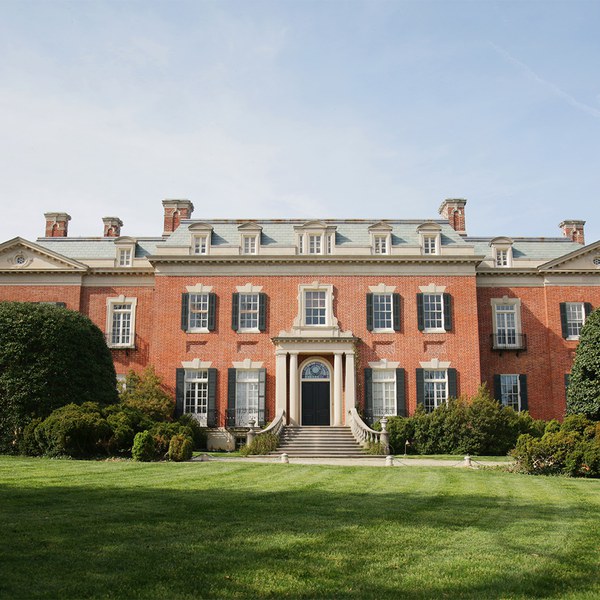For Immediate Release
February 23, 2021
Media Contact:
Erica Bogese
Communications Manager
(202) 749-8978
bogesee@doaks.org
WASHINGTON —Harvard University has appointed Thomas B. F. Cummins, Dumbarton Oaks Professor of the History of Pre-Columbian and Colonial Art at Harvard University, as Director of Dumbarton Oaks. Professor Cummins is a distinguished scholar of Pre-Columbian and Latin American colonial art and has been a member of the Executive Committee of Dumbarton Oaks, and former member and Chair of the Pre-Columbian Senior Fellows.
“An eminent scholar and seasoned administrator,” says Dean of Arts and Humanities Robin Kelsey, “Tom has proven to be a wise and compassionate leader while serving as interim director of Dumbarton Oaks, and praise for his leadership has come from many quarters. I have every confidence that the Dumbarton Oaks community will thrive under his leadership.” Professor Cummins served as Chair of the Department of History of Art and Architecture at Harvard from 2005 to 2012, successfully overseeing the department through a period of faculty regeneration and growth. Before joining the Harvard faculty, Cummins taught for eleven years at the University of Chicago and was the Director of the Center of Latin American Studies there from 1998 to 2001. He has been a Senior Fellow at Dumbarton Oaks, a Getty Research Institute Fellow, and is a Fellow of the American Academy of Arts and Sciences. He received his master’s degree and doctorate from UCLA.
Over the course of his career, Professor Cummins has served as acting director of the David Rockefeller Center for Latin American Studies and is on the executive committee of Villa I Tatti, the Harvard Center for Italian Renaissance Studies. He is on the Advisory Board of the Patricia Phelps de Cisneros Research Institute for the Study of Art from Latin America at the Museum of Modern Art and is a member of the Afro-Latin American Research Institute at the Hutchins Center for African & African American Research. He received La Orden “Al Mérito por Servicios Distinguidos" En el Grado de Gran Cruz bestowed by the Republic of Peru, the Katherine Singer Kovacs Prize from the Modern Language Association, and the Bryce Wood Book Award from the Latin American Studies Association.
“It is a great honor and privilege to become the Director of Dumbarton Oaks,” says Professor Cummins. “The community and staff have been an invaluable part of my life as they have been for so many others. Dumbarton Oaks is a leading center for the Humanities and has made a global impact on the scope and quality of Byzantine, Pre-Columbian, and Garden and Landscape studies. I am eager to work with my colleagues to make the future of studies in the Humanities ever more exciting and relevant for future scholars from around the world by developing new projects, collaborations, publications, and programs. Many are already in the planning stages and each one will be announced as they come to fruition over the coming years. Above all else, I look forward to reopening the doors of Dumbarton Oaks to share in the fellowship of scholarship and friendship after our universally shared year of isolation and darkness.”
###
About Dumbarton Oaks:
Dumbarton Oaks is a Harvard research institute, library, museum, and historic gardens located in Washington, DC. The institution emerged thanks to the imagination and legacy of Robert and Mildred Bliss, collectors of art and patrons of the humanities. The museum houses world-class galleries of Byzantine and Pre-Columbian art, two areas of interest to the Blisses. A third collection of a different sort exists in the historic gardens, which Mildred Bliss created in close collaboration with renowned landscape designer Beatrix Farrand. The gardens provide a resource for Garden and Landscape Studies. Since 1940, when the Blisses gifted the estate and collections to Harvard University, Dumbarton Oaks has supported the advance of knowledge in the three areas of Byzantine, Pre-Columbian, and Garden and Landscape Studies through a fellowship program and other awards; scholarly conferences; publications; and digital initiatives. In recent years, Dumbarton Oaks has extended its service to the community, already evident in the museum, gardens, and public events, by developing collection-based educational programs for DC students.
The founders, Robert Woods Bliss and Mildred Barnes Bliss, called upon future policy-makers “to remember that Dumbarton Oaks is conceived in a new pattern, where quality and not number shall determine the choice of its scholars; that it is the home of the Humanities, not a mere aggregation of books and objects of art; that the house itself and the gardens have their educational importance and that all are of humanistic value.” These ambitions continue to guide Dumbarton Oaks, but with close attention to ensuring that the Blisses’ “new pattern” retains its vitality through constant renewal.
The research institute’s location in Washington, DC, is no accident. Robert Bliss was a diplomat who enjoyed a distinguished career in the Foreign Service and eventually served as ambassador to Argentina. Dumbarton Oaks is known for hosting the Dumbarton Oaks Conversations, a series of important diplomatic meetings in 1944, at the height of the Second World War, whose outcome was the United Nations charter that was adopted in San Francisco in 1945. At these meetings, delegations from China, the Soviet Union, the United Kingdom, and the United States deliberated over proposals for the establishment of an organization to maintain peace and security in the world.
The historic gardens and museum are the public face of Dumbarton Oaks and receive thousands of visitors each year. The gardens are perhaps the last remaining landscape in North America that hews closely to the original Farrand design; they were voted by National Geographic one of the ten best gardens in the world. Buildings of architectural importance on the Dumbarton Oaks campus are the Pre-Columbian Gallery, the museum wing housing the Pre-Columbian Collection designed by Philip Johnson and completed in 1963, and the research library designed by Venturi, Scott Brown, and Associates and completed in 2007.

